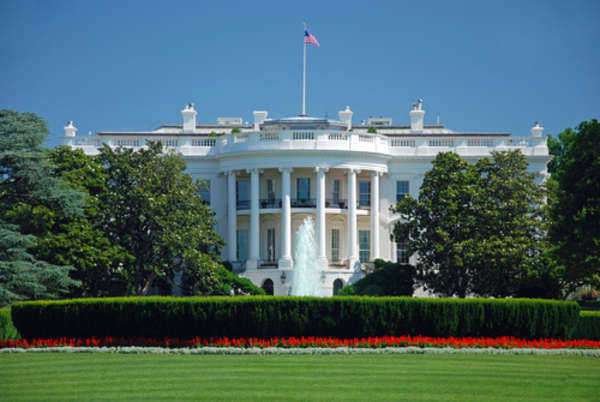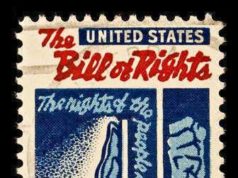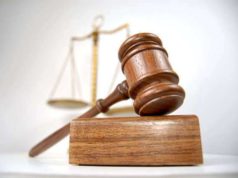Table of Contents
- 0.1 Introduction
- 0.2 Background on the Bill of Rights
- 0.3 Ten Important Facts about the Bill of Rights
- 0.4 Impact of the Bill of Rights on U.S. Politics
- 0.5 Impact of the Bill of Rights on the Legal System
- 0.6 Conclusion
- 1 The Idea of the Rights:
- 2 Prime Movers and Creators:
- 3 Who Wrote the Bill of Rights:
- 4 Non-inclusion in Original Constitution:
- 5 Importance in American Jurisprudence:
- 6 State Inclusion:
- 7 The two Supreme Court cases which solidified the inclusion of the Bill of Rights into state governments were:

Introduction
The Bill of Rights is a crucial document that outlines the fundamental rights and freedoms that every U.S. citizen is entitled to. It was added to the U.S. Constitution in 1791, and it has had a profound impact on American politics and the legal system. The Bill of Rights has helped to shape the country by protecting individual liberties, setting limits on government power, and providing a framework for the justice system. In this article, we will explore the Bill of Rights and its impact on U.S. politics and the legal system.
Background on the Bill of Rights
The Bill of Rights consists of ten amendments to the U.S. Constitution, each of which was crafted to protect the individual rights of citizens. The amendments were added in response to widespread concerns that the Constitution did not do enough to protect individual liberties. Ultimately, the Bill of Rights was designed to ensure that the government could not infringe on citizens’ fundamental rights.
The Bill of Rights includes a wide range of protections, including the freedom of religion, speech, press, assembly, and petition. It also guarantees the right to bear arms, the right to a fair trial, and protection against searches and seizures without a warrant. Additionally, the Bill of Rights prohibits cruel and unusual punishment and sets limits on the government’s power to seize property.
Ten Important Facts about the Bill of Rights
- The Bill of Rights was added to the U.S. Constitution in 1791.
- The Bill of Rights consists of ten amendments that protect individual liberties.
- The Bill of Rights was added in response to concerns that the Constitution did not do enough to protect individual rights.
- The Bill of Rights guarantees the freedom of religion, speech, press, assembly, and petition.
- The Bill of Rights includes protections against searches and seizures without a warrant.
- The Bill of Rights guarantees the right to bear arms.
- The Bill of Rights protects citizens’ right to a fair trial.
- The Bill of Rights prohibits cruel and unusual punishment.
- The Bill of Rights sets limits on the government’s power to seize property.
- The Bill of Rights has had a profound impact on U.S. politics and the legal system.
Impact of the Bill of Rights on U.S. Politics
The Bill of Rights has had a significant impact on U.S. politics. It has been used to protect individual liberties and limit the power of the government. Throughout U.S. history, the Bill of Rights has been a cornerstone of democratic governance, ensuring that the government abides by the principles of democracy and the rule of law.
The Bill of Rights has also played an essential role in political discourse and activism. It has been invoked to support a wide range of social and political causes, including free speech, civil rights, and LGBTQ+ rights. The Bill of Rights has become an important symbol of American democracy and has been celebrated throughout U.S. history as a symbol of the country’s commitment to individual rights and liberties.
Impact of the Bill of Rights on the Legal System
The Bill of Rights has had a profound impact on the legal system in the U.S. It has helped to shape the framework of the justice system by establishing protections for individuals accused of crimes. The Bill of Rights guarantees protections such as the right to a fair trial, protection against self-incrimination, and protection against excessive bail and fines.
Moreover, the Bill of Rights has also played a critical role in protecting citizens from government abuse of power. It provides a mechanism for citizens to challenge the government when their constitutional rights have been violated. Over the years, the Bill of Rights has been evoked to challenge government policies and practices that were deemed unconstitutional, including the use of surveillance and the detention of individuals without due process.
Conclusion
The Bill of Rights has had a profound impact on U.S. politics and the legal system. It has been a vital document in the U.S. democratic system, protecting individual liberties while limiting the power of the government. The Bill of Rights has ensured that U.S. citizens have the protections they need to live in a free and democratic society. As such, it remains a cornerstone of American democracy, providing a framework for democratic governance and individual rights.
Ratified in 1791, the Bill of Rights contain the first 10 Amendments to the United States Constitution. The
Bill of Rights was the first national doctrine in American history to specifically, designate liberties or freedoms to individual citizens.
When the original Constitution was drafted in 1777, the focus of the drafters was to further empower the role of the central Government. Leading Federalist Party members such as Alexander Hamilton routinely attempted to strengthen the role of the Government to fortify the levying of taxes and the construction of a firm legal code. As a result of these repeated attempts to further authorize the Federal Government, a sentiment administered by the Anti-Federalist Party was gaining momentum.
Before America won the Revolutionary War, the authoritarian monarchy of Britain routinely enforced unfair taxes and punishments on colonialists. Tired of mistreatment, American settlers strongly believed that a powerful central government would lead to
tyranny and a subsequent civilian uprising. Although the adoption of the Bill of Rights into the Constitution took almost 15 years, influences such as Shay’s Rebellion and prior state Constitutions paved the groundwork for the inclusion of individual liberties.
Led by James Madison, George Mason, and Thomas Jefferson, theAnti-Federalist Partysuccessfully constructed the Bill of Rights in 1789. The first 10 Amendments include a wide an array of civil liberties such as freedom of speech, freedom of religion, the right to a fair, speedy, and public trial, the right to bear arms, and protection from excessive bails, fines, and punishments.
The Idea of the Rights:
The Bill of Rights, which was implemented into the U.S. Constitution in 1791, acted as a bridge between the Federalist Party and Anti-Federalist Party. The Bill of Rights was
the ultimate compromise between the two parties. The first 10 Amendments, which
guarantee a series of freedoms for the American citizen, unequivocally satisfied then-Federalist Party and their desire for individual inclusion in the Constitution.
In addition to individual freedoms, the Federalist Party viewed the inclusion as sufficient because the central Government retained significant power.
The Bill of Rights sufficiently acted as a check to the central Government while distributing delegating powers to both Federal and State governments. The premise of the first10
Amendmentsrevolves around individual liberties and sustaining rights to the citizen to thwart an autocratic government.
Prime Movers and Creators:
The members of the Anti-Federalist Party are credited with the creation and subsequent adoption of the Bill of Rights. George Mason, Patrick Henry, and James Madison were the leaders of the Anti-Federalist Party and the chief influences for the creation of the first 10 Amendments. When the articles of Confederation(first draft of the United States Constitution) was adopted, the provisions within primarily revolved around the powers of the central Government. Individual freedoms liberties were not mentioned in the original Constitution, yet instead were thought to be interpreted through the separation of powers.
George Mason and Patrick Henry routinely argued for the inclusion of such rights, claiming that tyranny would arise without a direct inclusion of individual rights in the Constitution.During Congressional hearings (ratification meetings), the Federalist Party would make their sentiments heard through constant rhetoric that revolved around the inclusion of individual liberties. Mason and Henry routinely mentioned the irony of a strong central Government and the mistreatment it displaced on settlers prior to the
Revolutionary War. After much debate and inertia, James Madison authored the Bill of Rights in June of 1789.
Who Wrote the Bill of Rights:
The Bill of Rights originated through sentiments that opposed dominating central governments. After America won its freedom from Britain in 1776, the need for a governing doctrine became essential. The original Constitution was drafted in 1777 and focused primarily on the distribution of powers between the Federal and State governments. Leaders of the Constitution were concerned with creating a functional
government to properly levy taxes and offer society a suitable legal system. The years following the initial adoption were filled with fervent debate. Many working-class settlers believed that the Constitution would spawn a government similar to Britain’s monarchy.
The majority of individuals who fought against Britain during the Revolutionary War believed that they were fighting for their individual freedom. They were tired of being mistreated and forced to pay excessive taxes or fines to the British Government. The countless individuals who foresaw a similar government to that of the monarch expressed their discomfort through revolts (Shay’s Rebellion) and discussions raised at Congressional meetings or assembly halls. The desires of the individual and the Anti-Federalist Party became tangible in 1789 when the Bill of Rights was officially produced. The original Bill contained 12 Amendments and was later ratified to 8.
After another ratification process, the Bill of Rights was increased to 10 Amendments. The first 10 Amendments was a derivative ofState constitutions, French ideas, and British doctrines. The proposal of the first 10 Amendmentswas officially adopted through the necessary 3/4 state vote on December 12th, 1791.
Creation:
Although not officially adopted until 1791, the doctrines and previous Constitutions which influenced the Bill of Rights date back centuries prior. The first 10 Amendments in the United States Constitution guarantee an individual citizen undeniable rights and liberties. The freedoms and various protections offered in the Bill of Rights were spawned through centuries of similar documents. Ironically, some of the greatest influences which sparked the creation of the first 10 Amendments were famous British documents. The Magna Carta for instance, created in 1215, was one of the first fundamental doctrines that limited the powers of the controlling government.
Like the Petition of Right (1628), the Magna Carta limited the powers and unjust policies of the controlling Monarch. The British Bill of Rights (1689) was another prime influence on the United States version. The Monarch was further limited through the British Bill of Rights and the adoption of similar principles found in the 2nd, 6th, and 8th Amendments. Although the British influence in the Bill of Rights is unquestioned, a series of domestic Constitutions also laid the groundwork for the inclusion of the Bill of Rights into the United States Constitution.
Before the ratification of the first 10 Amendments, individual states possessed their own Constitutions, many of which already offered civil liberties outlined in the reformed Constitution.
Non-inclusion in Original Constitution:
Created just a year following the Revolutionary War, the articles of Confederationacted as the first Constitution for the United States of America. The original draft was written by an appointed staff and subsequently ratified by State leaders. The original Constitution attempted to establish the United States as a sovereign nation with a developed legal and tax system. The Articles of Confederation unified all states in the union into one governing body but maintained a unique separation of powers between jurisdictions. When the United States first gained freedom, the necessary provisions within the Constitution revolved around western expansion and a fully functional central government.
There was no mention of individual freedoms or liberties within the original context. The
issue pertaining to individual powers was routinely shot down. The makers of the Articles of Confederation believed that individual rights were implied through the separation of powers and the role of the State governments. Through Congressional meetings, the Constitution was ratified numerous times. Eventually, the Bill of Rights was adopted as the anti-Federalistsentiment reached the majority of the population.
Importance in American Jurisprudence:
The Bill of Rights is perhaps the most substantial document ever created in American history. Although published over 200 years ago, the majority of freedoms awarded in the first 10 Amendments of the United States Constitution are still pertinent to this day. Through the creation of the Bill of Rights, American citizens are able to express their individuality through the liberties and freedoms outlined in the United States Constitution.
The liberties detailed in the first 10 Amendments guarantee an individual the right to a fair, speedy, and public trial along with protection against cruel and unusual punishment,
excessive bails or fines.
The liberties outlined in the Bill of Rights also prohibit law enforcement agencies from improper search and seizure of personal property or assets. Many of the Amendments are
crucial in the development of American society. The First Amendment, for instance, is arguably the foundation for free thought and expression. The right to free speech, religion, and press is something that has distinguished America as a unique society that encourages expression and free thought.
State Inclusion:
Published over 200 years ago, the Bill of Rights was initially governed solely by Federal
law. Trials or legal matters that questioned an individual’s Constitutional rights did not extend to State governments until the early 1890s. Supreme Court precedents eventually included the Bill of Rights into state law through the inclusion of the 14th Amendment and its Due Process Clause. The 14th Amendment and the Due Process Clause eventually enabled State governments to recognize the liberties or rights offered in the Bill of Rights.
The two Supreme Court cases which solidified the inclusion of the Bill of Rights into state governments were:
Chicago, Burlington and Quincy Railroad v. City of Chicago (1897) and Gitlow vs. New York(1925.) These two rulings officially cemented the Bill of Rights into state law. Although the majority of individual liberties outlined in the Bill of Rights are respected at a State level, there are a few Amendments and subsequent provisions that have failed to reach local governments.
























